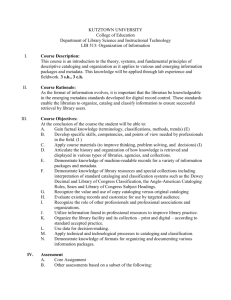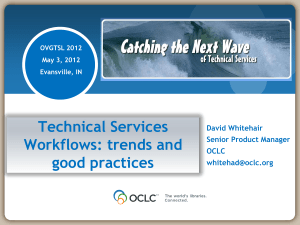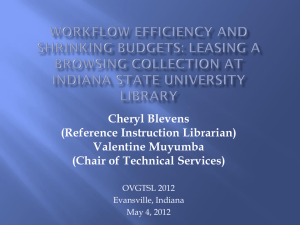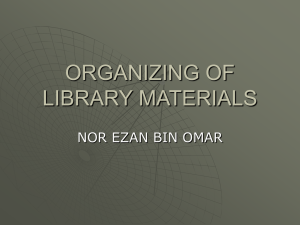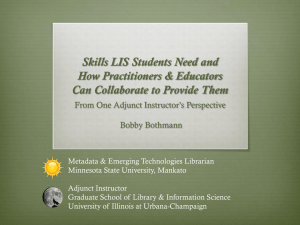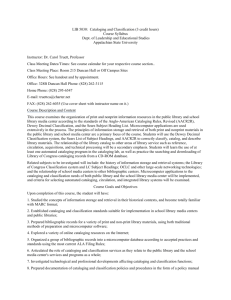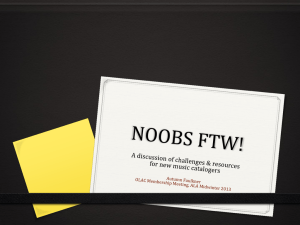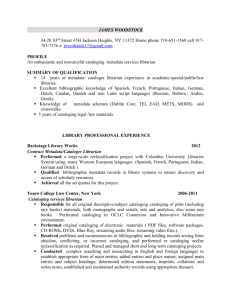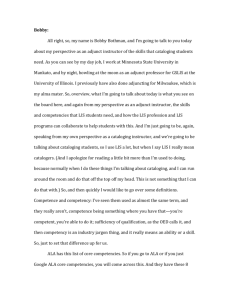presentation source
advertisement
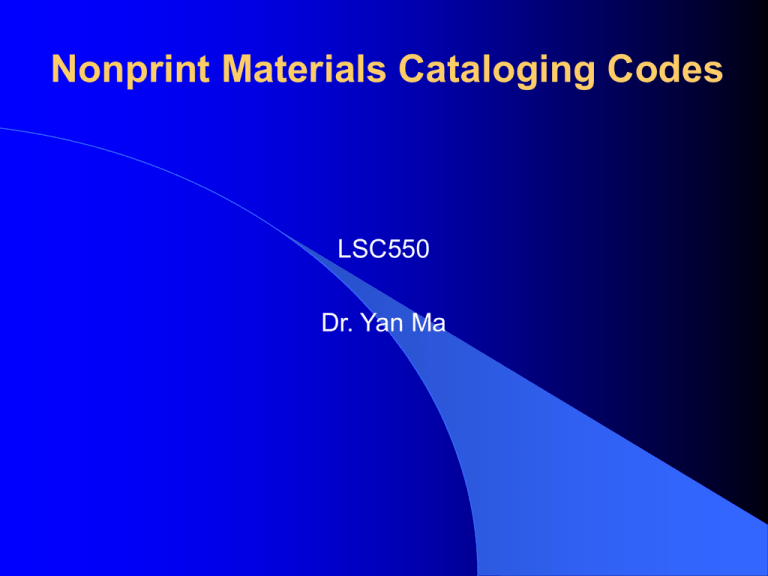
Nonprint Materials Cataloging Codes LSC550 Dr. Yan Ma History of the Development of Cataloging Code: Nonprint Materials Development 1841 Anthony Panizzi -- Keeper of the Printed Books -- British Museum -- “91 rules” -- first modern cataloging cataloging code 1949 -- Cataloging Rules for Author and Title Entries (ALA) -- Rules for Descriptive Cataloging in the Library of Congress (LC) **Rules for choice of entry and the form of headings for books and a few types of nonbook materials were contained in the ALA ** These codes were an strong influential force in the development of nonbook cataloging codes. 1950s --Eunice Keen -- Manual for Use in the Cataloging and Classification of Audiovisual Materials for a High School Library was first published in 1949. --Phonographs (1952) (ALA) --Motion pictures and filmstrips (1953) (ALA) 1960s -- DAVI Task Force (1966) -- AACR1 (1967) -- Standards for Cataloging, Coding, and Scheduling Educational Media (1968) 1970s -- 1971. Standards for Nonprint Materials (AECT) -- 1972: Revision. -- 1976: Revision. -- 1977. ISBN --foundation for revision of rules for nonbook materials of AACR2, 1978 -- JoAnn Roger’s survey in 1977 1973--The British Library Association and the National Council for Educational Technology published a document Non-Book Materials Cataloging Rules. It represents a combination of both "library" and "media" interests. 1977--the development of ISBD (International Standard Bibliographic Description) by IFLA. 1978--AACR2 was published. 1980s -- AACR2R was published in 1988. 1995 -- Cataloging Internet Resources: A Manual and Practical Guide -- edited by Nancy Olson -- published by OCLC -- based on Chapter 9 of AACR2R 1997 -- Cataloging Internet Resources: A Manual and Practical Guide -- 2nd edition -- edited by Nancy Olson -- published by OCLC -- based on Chapter 9 of AACR2R Current Practices: A Survey in 1998 Wisconsin and Tennessee Nine Types of Nonprint Resources: -- Computer Files: Computer Disks; CD-ROMs; Electronic Files [e.g., Internet] -- Sound Recordings: Compact Discs; Vinyl Records; Cassette Tapes -- Visual Materials: Video Tapes; Video Discs [laserdiscs]; Motion Pictures [film reels] Current Practices: (11 tables will be shown on transparencies) What Does This Mean? -- AACR2R is the cataloging code of choice. -- Demonstrated that Wisconsin is more consistent in cataloging of nonprint (1997) than is Tennessee -- Further research is needed to study questions related to organization of nonprint materials. Inferences to Schools in US -- AACR2R is the cataloging code of choice for nonprint materials in ALL K-12 schools. -- Collection sizes will vary widely. -- online catalogs are more prominent and will take over from card catalogs. -- schools are choosing to catalog nonprint materials. -- Sears List of Subject Headings are the subject headings of choice in K-12 schools Inferences to Schools in US -- Sears List of Subject Headings are the subject headings of choice in K-12 schools -- Dewey Decimal Classification is the classification of choice. --Use prefix or suffix in call numbers --Intershelving varies. -- Closed and open stack policies vary-about equal percent of each choice. Conclusions -- Historical Influences and the Present -- AECT Today and Cataloging Code -- Current Nonprint Media Cataloging Standards in K-12 U.S. Public Schools: AACR2R -- Current Nonprint Media Cataloging Standard in academic and public libraries: AACR2R.
